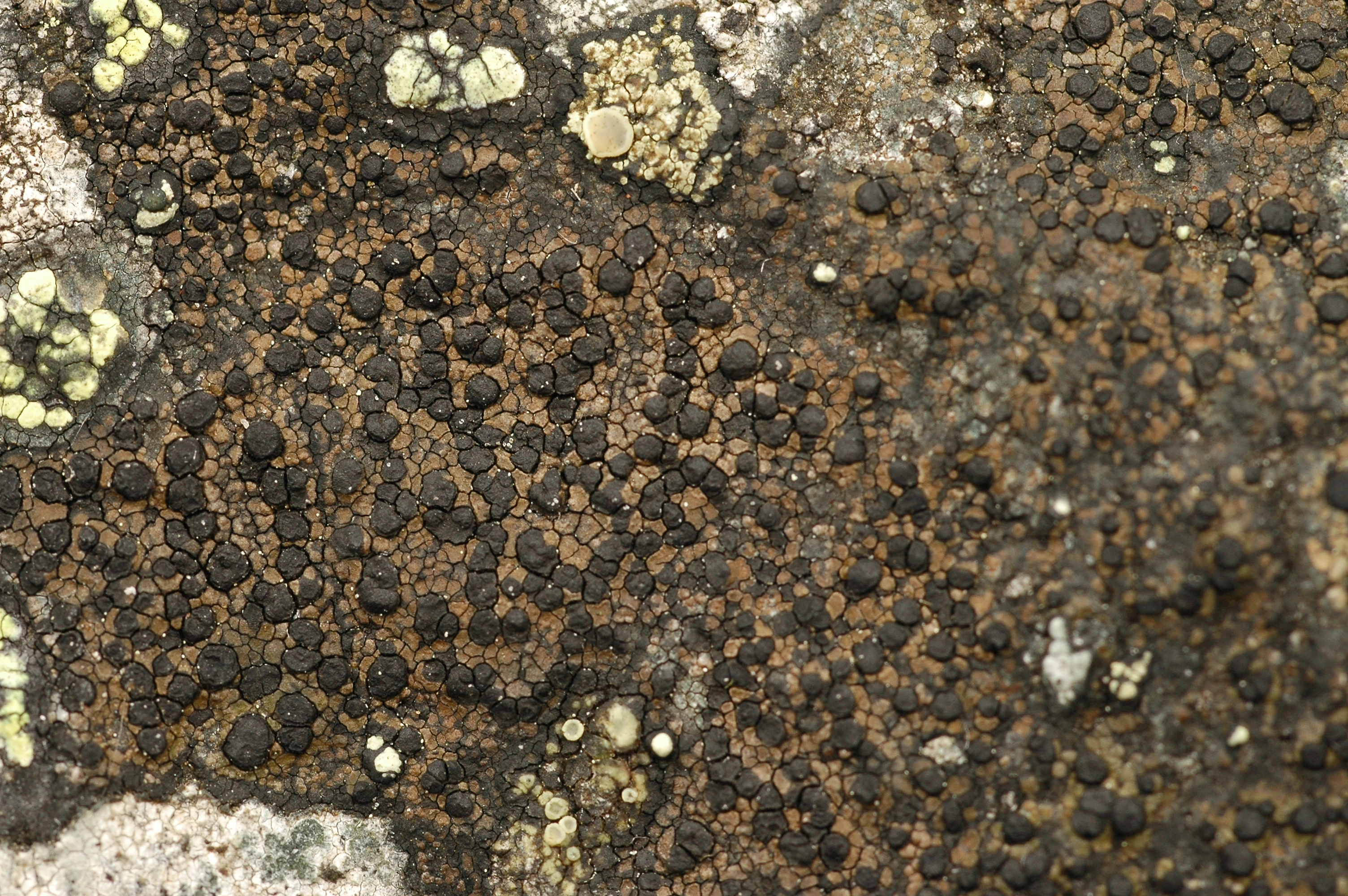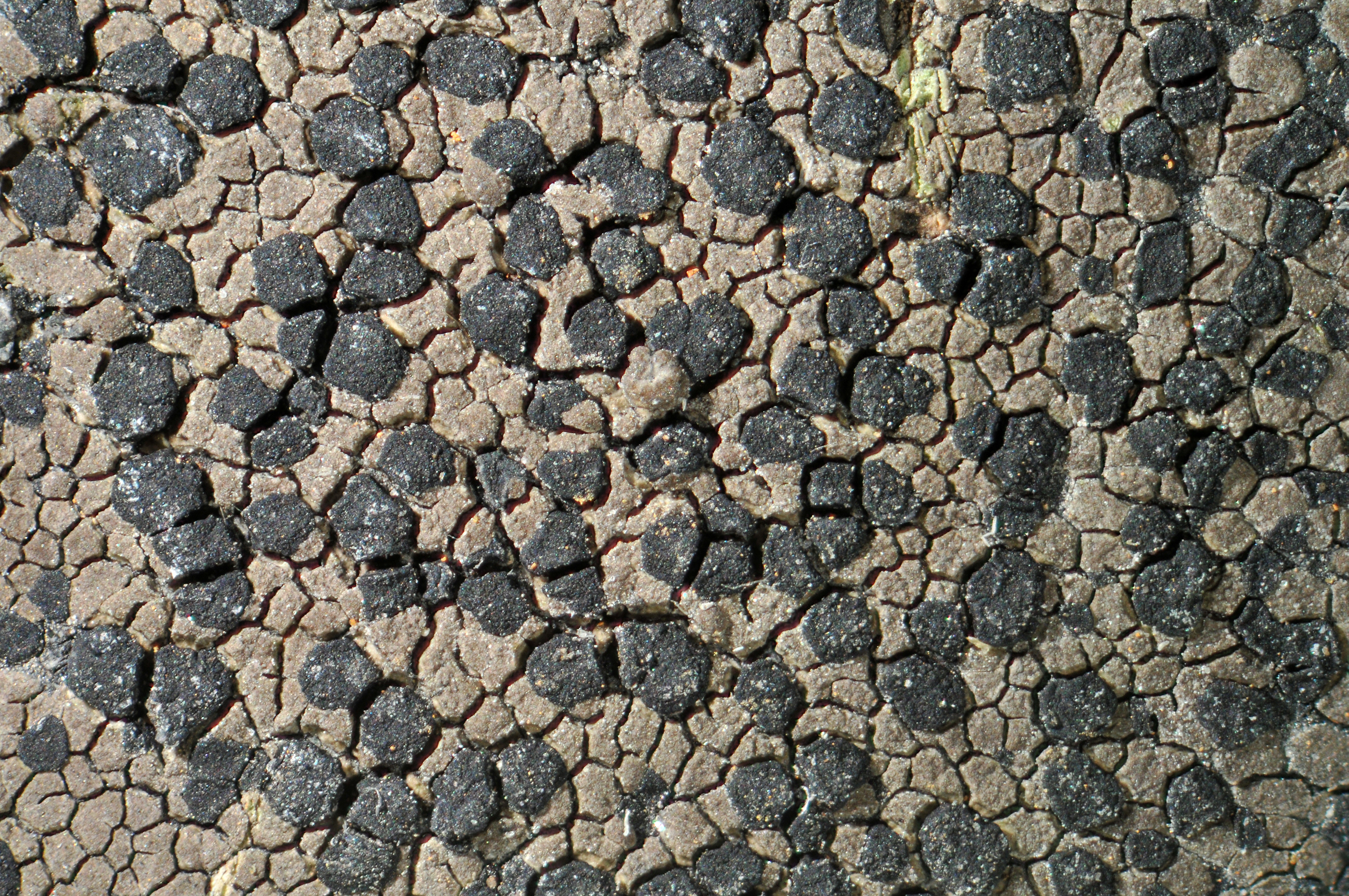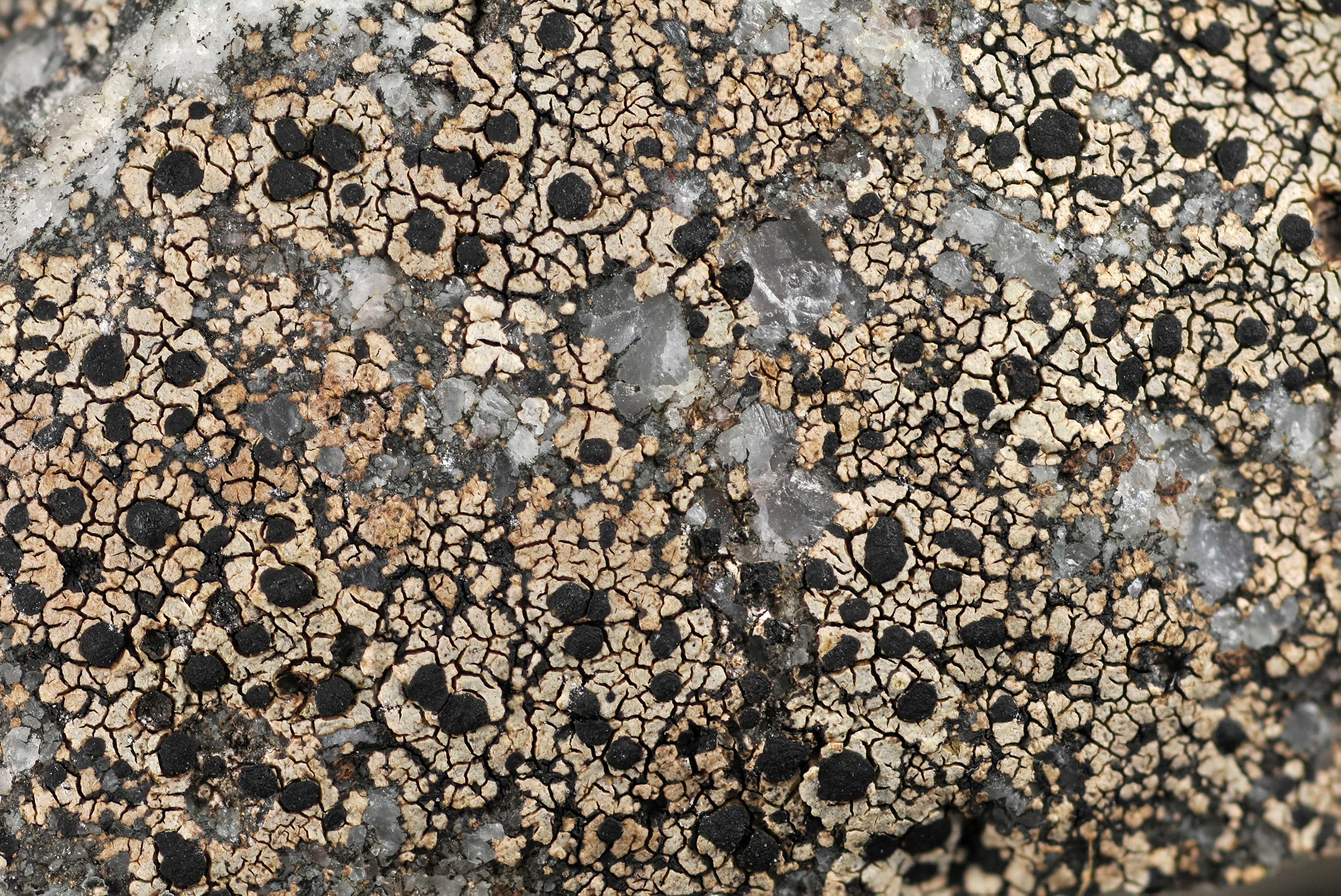Rhizocarpon polycarpum
- Innhold
- Morphology
- Chemistry
- Habitat
- Comment
- Look-alikes
Morphology
Thallus areolate, up to 5 cm diam.; hypothallus well developed, black; areolae up to 0.5 mm diam., dark brown, sometimes with a faintly greyish tinge, dull, contiguous or scattered, orbicular to angular, plane to weakly convex; medulla KI+ dark violet. – Apothecia up to 0.7 mm diam., black, epruinose, orbicular or angular, usually remaining plane, with a narrow and persistent margin; excipulum brownish black, K–; hypothecium dark brown, K–; hymenium colourless; epihymenium dark brown or reddish brown, K– or K+ red; no crystals or granules in the apothecia; ascospores 8 per ascus, mainly 1-septate, persistently colourless or becoming faintly brown with age, 17–30 × 8–11 µm. – Conidiomata not seen.
Chemistry
Stictic acid or, more frequently, no lichen substances; spot tests: medulla PD+ orange, K+ yellow, or PD–, K–; C–.
Habitat
On siliceous rock, mainly in the lowlands but extending into the alpine region. Common.
Comment
The species is recognized mainly by the dark brown, small areolae with an amyloid medulla, the narrow apothecial margin, and the 1-septate, long colourless ascospores. The maritime species R. richardii is lighter brown, usually with a gray tinge, have a broader, more indistinct apothecial margin, and often contains gyrophoric acid with or without stictic acid. Rhizocarpon distinctum is morphologically very similar to R. polycarpum, but has submuriform ascospores and sometimes gyrophoric acid.


